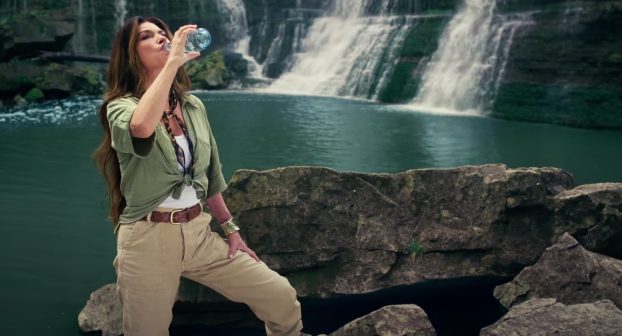My out-of-town and new-to-the-ad-biz client asked, very politely, why she shouldn’t accept the local newspaper’s offer to pub set changes in one of our ads for free, rather than pay us to make the changes in the, ahem, wonderfully crafted original, and send a new repro proof.
I told her that type and design in advertising was kind of like fabric and cut in fashion merchandise.
The masses know nothing about typesetting, or, for that matter, tailoring, but they know the difference.
The risk she ran with a pub set ad was that it could come out looking like the printed equivalent of a guy in a one hundred and sixty-nine-dollar polyester three-piece suit.
My ad, the schnook! We reset it.
It takes some people decades to realize the terrible and relentless truth that every picture tells a story.
And everything one hears, sees, watches or reads about a product is fed inexorably into the computer that is constantly recalculating our relationship to that product, for better, or worse!
Is this brand really for me? Or is it a brand for those dreadful people next door?
Yet nothing is more common than the argument that defends ugly, shoddy, boring, banal, graceless executions on the grounds that hey, it’s advertising! I’m paying megabucks to run it! It’s gonna be doing me good! it couldn’t hurt!
David Ogilvy tells the story of a marketing research director at Ford who once ran ads in every other copy of Reader’s Digest. At the end of the year, the people who hadn’t been exposed to the advertising had bought more Fords than the people who had.
Mr. Ogilvy muses that there is a tacit conspiracy among clients, media and agencies to prolong the myth that all advertising increases sales to some degree. It doesn’t, he adds, emphatically.
Clearly the Benetton retailers who are in revolt against a marketing program that invites their potential customers to empathize with ghastly images of death, aids victims and burning cars believe advertising can cost you a bundle two ways.
The Brick’s snake oil salesman approach to advertising always reminds me of that great New Yorker cartoon, where two toney couples occupy a booth in a swish Manhattan restaurant, and somebody says Remember the night we almost went bowling?
Leon’s almost-always-funny spots sugarcoat the dubious never-never payment plan pitches with sufficient grace to give middle-class folks permission to shop there.
Remember the time we almost went to the Brick? Yeah, right! That’s the place for the gullible poor, isn’t it?
Last time out, we noted that south of the border, they’ve dusted off the old Wear a moustache milk marketing board campaign, and hired the perfect and pricey upper lips of Christie Brinkley, Iman and Joan Rivers to do the wearing. Striking imagery, but you want to say fine, I get it, now wipe it off!
It reminds me of how the old Canadian moustache campaign targeting teenagers running around with scuzzy milk foam under their noses used to set me screaming at the television screen.
Maybe it researched better than it looked, but not much makes a fourteen-year-old look more uncool than a baby’s milk moustache, and so few teens take well to the idea of looking like a dork.
As Garfield noted in Ad Age the other day, a dark fear that haunts the creators of anti-smoking advertising is that the more dangerous you make it, the more perversely enticing it may become to a generation obsessed with cool, which is partly a stance of unruffled nonchalance in the face of peril, and nicely achieved by simply exhaling a gust of smoke through your nose while staring into the middle distance.
The current Rolling Stone contains an ad for The Young Ones, a program offered by Comedy Central, The Comedy Cable Channel. It invites us to match each kid on the show with a four-color shot of his vomit! Ha Ha!
Reminds us of the spot shown recently on Canadian tv for the Airborne. We hated it so much, we disbanded the whole regiment! Never doubt that advertising works. But always ask which way!
Barry Base is president and creative director of Barry Base & Partners, Toronto.























